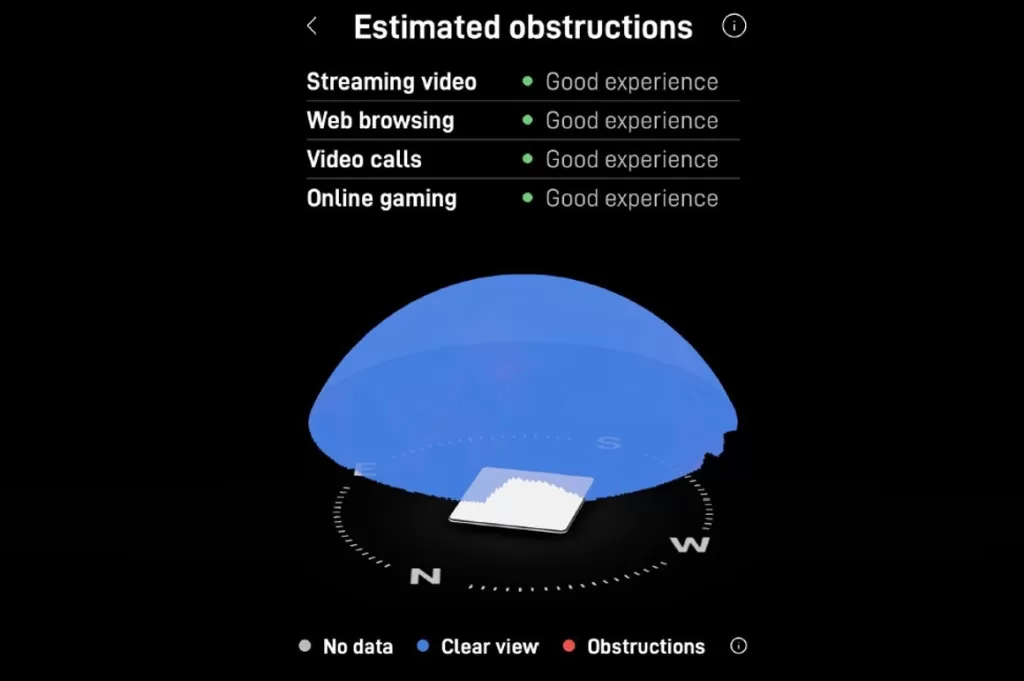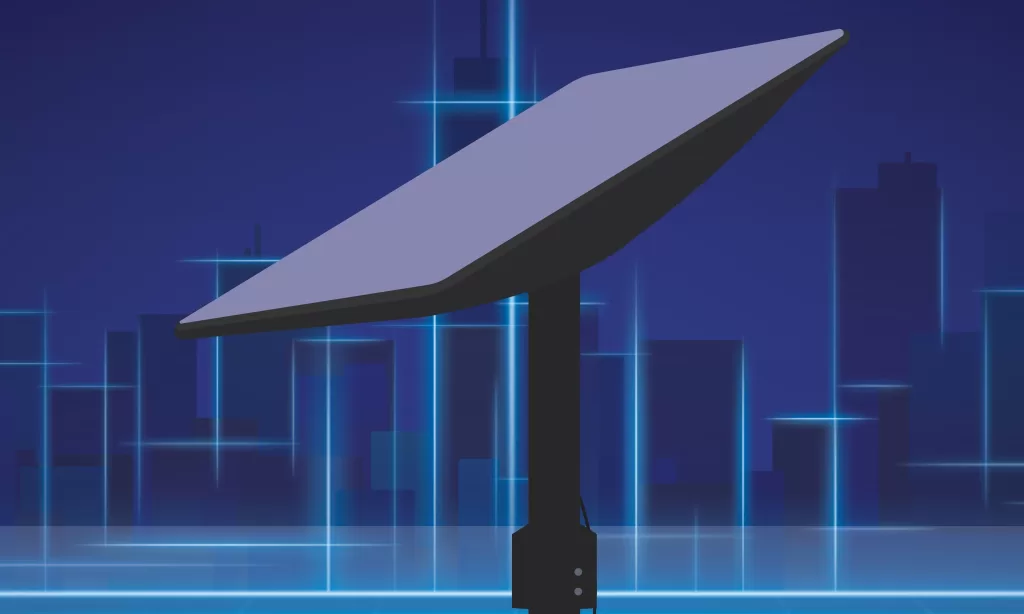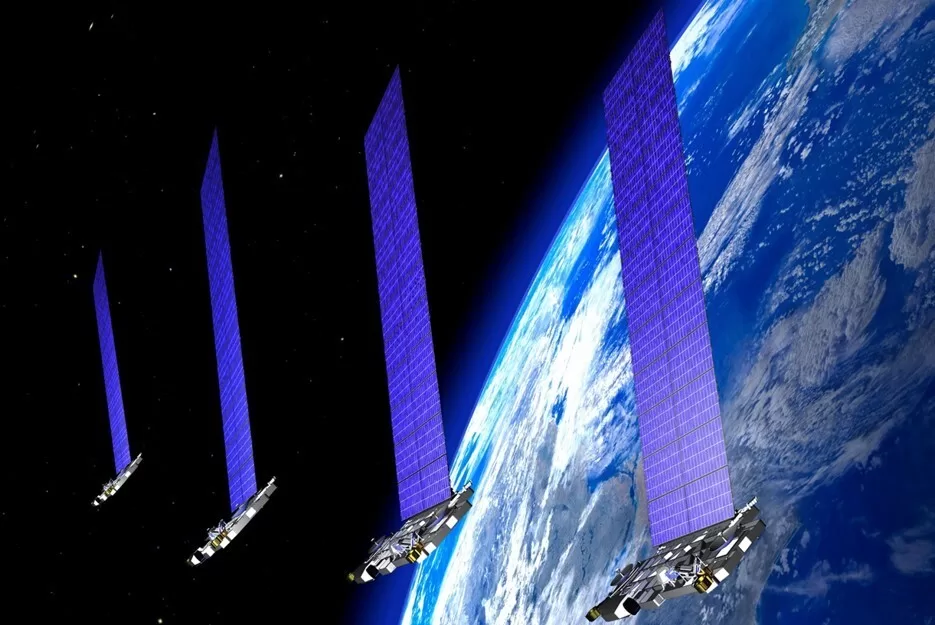Introduction: The Rise of Starlink and the Future of Internet Everywhere
If you’ve looked up at the night sky recently and noticed a shimmering line of moving lights, you’ve probably seen the Starlink satellite train in action. With more than 5,600 satellites currently orbiting Earth, Starlink now makes up over 50% of all active satellites — a staggering achievement that’s reshaping global internet connectivity.
Designed by SpaceX, Starlink aims to deliver high-speed internet anywhere in the world, especially in rural, remote, or mobile environments where traditional broadband struggles. Thanks to its low-Earth orbit network, Starlink provides internet speeds between 100 and 300 Mbps, with latencies as low as 40 milliseconds — a game-changer compared to traditional satellite services.
In this Starlink installation guide, we’ll walk through everything you need to know about installing and optimizing Starlink — including fixed roof installations, ruggedized mobile setups, performance optimization tips, cost comparisons with other providers, and the exciting upgrades coming next. Whether you’re looking for backup connectivity or primary access miles away from fiber, this guide has you covered.
In this guide, we’ll cover:
- What Starlink is and why it matters
- How to install Starlink for fixed and mobile environments
- How ServicePoint enhances enterprise Starlink deployments
- How to optimize Starlink performance
- Starlink vs. fiber, LTE, and traditional satellite
- What’s next: Starlink V2 Mini satellites and future upgrades
- Common questions about Starlink deployment (FAQ)
What Is Starlink? And Why It Matters Today
Starlink is a low-Earth orbit (LEO) satellite network developed by SpaceX, designed to deliver broadband internet with far lower latency and much higher reliability than traditional satellite providers. By operating closer to Earth than legacy satellite systems, Starlink dramatically reduces signal travel time, enabling faster, more responsive connections.
This makes it especially valuable for real-time applications like video conferencing, cloud access, and VoIP. As the constellation expands, its performance and coverage continue to improve, offering a compelling alternative for locations underserved by terrestrial infrastructure.
The perception of Starlink has shifted dramatically in just a few short years. What was once viewed as a promising but experimental satellite service aimed at bringing connectivity to remote and underserved corners of the world has quickly evolved into a serious enterprise-grade internet solution.
Today, industries such as retail, distribution, banking, manufacturing, healthcare, energy, education, construction, transportation, and public safety are deploying Starlink to maintain reliable connectivity across geographically dispersed operations.
Whether it’s keeping point-of-sale systems online in a rural store, powering backup connectivity for ATMs, enabling fleet communications in remote areas, or delivering internet to mobile command vehicles and marine vessels, Starlink has proven itself as more than just a last-resort option — it’s become a strategic component of modern business continuity planning.
This Starlink business install guide outlines how to deploy and optimize the system effectively across these varied use cases.
Key Features:
- High-Speed Internet: 100–300 Mbps typical
- Low Latency: 40–70ms (vs. 600ms+ for older systems)
- Global Reach: Service even in remote, rural, and mobile areas
Unlike fiber or cable, Starlink doesn’t require ground infrastructure — making it ideal for:
- Rural properties
- Remote job sites
- Mobile operations (vehicles, RVs, boats)
- Primary, secondary, or tertiary internet for businesses

Starlink Installation Guide: Best Practices for Fixed and Mobile Use
Installing Starlink correctly is essential for achieving optimal speed, stability, and long-term performance. There are two primary deployment types: fixed installations and mobile or maritime installations, each with its own set of technical and environmental considerations.
ServicePoint supports both deployment models with enhanced engineering, project coordination, and ruggedized solutions tailored for complex enterprise environments — from remote facilities to moving vehicles and offshore assets.
Fixed Starlink Installations
Ideal for businesses, homes, and field offices with stable infrastructure, fixed Starlink setups require precise placement and secure mounting of the flat high-performance (HP) dish. Proper alignment ensures optimal satellite coverage and minimizes the risk of signal interruptions. Fixed deployments are especially useful for rural warehouses, distribution hubs, or temporary project sites with no other broadband options.
Key Technical Considerations:
- Mounting: Use approved structures like vertical poles or non-penetrating roof mounts
- Sky Visibility: Maintain a 100°+ unobstructed view for consistent connectivity
- Orientation: Flat HP dishes auto-orient; no manual adjustment needed
- Cable Runs: Keep under 150 ft; protect with UV-rated conduit
- Grounding: Follow NEC standards with proper bonding and surge protection
- Validation: Perform full post-install speed and signal testing

Mobile Starlink Installations
Built for field teams, vehicles, and vessels, mobile installations prioritize durability and connectivity in motion. Only the flat HP dish is approved for mobile or maritime use. This makes it ideal for emergency response units, mobile clinics, construction trailers, and marine vessels that require real-time connectivity on the move. Reliable internet access during transit enables teams to communicate, stream data, and operate cloud-based applications without interruption.
Key Technical Considerations:
- Dish Selection: Flat HP dish required for mobile deployments
- Mount Stability: Use vibration-resistant or marine-grade mounts
- Power Integration: Use DC converters or inverters with surge protection
- Cable Sealing: IP67+ rated penetrations to withstand outdoor/marine exposure
- Firmware & App: Use the Starlink app for validation, diagnostics, and updates
How ServicePoint Adds Value to Both Fixed and Mobile Installations
While Starlink’s standard installation guidelines provide a strong foundation, ServicePoint takes deployment further by applying engineering precision, logistical coordination, and field-proven hardware designed for enterprise-scale reliability. These specialized capabilities are part of our broader Enterprise Networking Solutions — ensuring that each Starlink installation is not only technically sound, but seamlessly integrated into your organization’s IT infrastructure.
ServicePoint Specialized Engineering & Installation:
- Site Surveys & Engineering Packages: Obstruction scans, cable planning, mounting validation, and full documentation.
- Custom Mounting & Structured Cabling: Roof mounts, poles, walls, tripods, towers, ground bases, and elevated frames.
- Antenna-to-Network Integration: Extending Starlink connectivity throughout buildings with our expert structured cabling solutions.
- Portable & vehicle-mounted solutions: HUMVs, emergency response, mobile offices and command centers.
- Managed Deployment: Real-time logistics, tech support, and project coordination through our Command Center Approach.
ServicePoint Starlink Quick Deployment Options
White Glove Rapid Response – ServicePoint offers Rapid Response teams that are equipped with pre-kitted Starlink solutions designed for immediate activation in critical scenarios — including disaster recovery, emergency field operations, and remote asset restoration. Each rapid deployment kit is engineered for durability, portability, and quick setup, ensuring service continuity even under the most challenging conditions.
Pre-Kitted Hardened Kits – Our ruggedized Starlink deployment kits are housed in durable Pelican-style cases with custom foam interiors, protecting sensitive components during transit and field use. Kits include options for AC power, solar charging, or 12V vehicle power, as well as modular mounting accessories (tripods, poles, vehicle clamps) to support diverse environments — from urban rooftops to off-road mobile command posts. Designed for off-grid versatility, these kits allow teams to establish high-speed connectivity within minutes, anywhere.

ServicePoint Starlink Installation Process: Precision at Scale
ServicePoint ensures scalable, high-quality installations through a standardized 6-step process. Our Command Center approach is essential to coordinating the entire process — from the initial site survey to satellite dish placement and final installation. By managing resources, timelines, and deliverables in real time, we eliminate guesswork and ensure each installation is fully optimized before technicians arrive. This proactive strategy reduces delays, improves precision, and gives clients full visibility throughout deployment.
Step 1: Initial Consultation & Planning
Define goals, confirm equipment, and assess viability through pre-surveys for obstruction and mount readiness.
Step 2: Centralized Project Management
Our command center approach manages logistics, technician dispatching, and install plans with live tracking and client dashboards.
Step 3: Technician Deployment
Certified field teams arrive pre-equipped and trained, routed by region for consistency and speed.
Step 4: On-Site Installation
Technicians install and configure dish, cabling, and router; validate line-of-sight and network integration.
Step 5: Quality Assurance
Run speed and signal tests, capture install photos, and submit documentation for sign-off.
Step 6: Post-Installation Support
24/7 help desk, remote monitoring, and SLA-based response ensure long-term service continuity.
Key Benefits for Clients:
- Deployable across 10,000+ sites in 2025
- 1,500+ rooftop-certified technicians
- Rapid time-to-service in remote and high-priority areas
- Validated installs with speed testing and QA documentation
- Enterprise-grade performance and reliability
With Starlink’s satellite power and ServicePoint’s national field force, you get proven connectivity at scale — whether powering a rural warehouse or a mobile command vehicle.
Starlink Installation Guide: Ongoing Optimization for Starlink Performance
Installation is just the beginning. To maintain high performance, ongoing optimization is key.
Top Performance Tips:
- Mount high and clear of obstructions
- Use Ethernet adapters for priority devices
- Keep firmware updated
- Use SD-WAN or multi-WAN routers for seamless failover
Common Troubleshooting:
- Check for new obstructions like tree growth
- Expect peak-time slowdowns in congested regions
- Ensure firmware and hardware are up to date
Starlink vs. Other Internet Options
When evaluating connectivity options for remote, mobile, or backup scenarios, it’s important to compare not just speed, but deployment time, cost, and reliability. The chart below highlights how Starlink stacks up against fiber, LTE/5G, and traditional satellite — and why it’s quickly becoming the go-to choice for enterprise-grade internet in hard-to-reach environments.
|
Service Type
|
Install Cost
|
Monthly Fee
|
Typical Speed
|
Best For
|
|---|---|---|---|---|
|
Starlink
|
$599–$2,500
|
$120–$500
|
100–300 Mbps
|
Remote, mobile, backup
|
|
Fiber
|
$3,000+
|
$300–$1,500+
|
1–10 Gbps
|
Urban primary
|
|
LTE/5G
|
$200–$800
|
$30–$300
|
10–150 Mbps
|
Mobile/backup
|
|
Traditional Satellite
|
$300–$800
|
$150–$400
|
10–50 Mbps
|
Rural, low-demand
|
Summary:
- Starlink is faster to deploy than fiber in remote areas
- More consistent than LTE/5G, especially for heavy usage
- Vastly outperforms traditional satellite in speed and latency

The Future of Starlink: What’s Coming Next
Starlink continues to evolve with the rollout of V2 Mini satellites — next-gen LEO spacecraft designed to improve speed, capacity, and coverage. Existing Starlink dishes are fully compatible, so users benefit without needing new hardware. V2 Minis sit between today’s V1.5 models and the larger V2s that will launch aboard Starship. They deliver critical upgrades for reliability, scalability, and underserved regions.
Key Enhancements with V2 Mini Satellites:
- Greater Bandwidth: Supports more users with less congestion
- Advanced Antennas: Improves satellite-to-ground link quality
- Optical Laser Interlinks: Enables satellite-to-satellite communication in space
- Direct-to-Cell Support (Coming Soon): Provides basic cellular access (voice, text, limited data) directly to smartphones
- Stronger Hardware: Each V2 Mini weighs 800 kg — 3x more powerful than earlier models
Frequently Asked Questions (FAQ)
Does Starlink work in bad weather?
Yes, but heavy snow or rain may temporarily degrade signal quality.
Is Starlink good for business internet backup?
Absolutely — especially for secondary or tertiary failover.
How many Starlink satellites are currently in orbit?
Over 5,600 as of 2025, with more launching every month.
Can Starlink be used on moving vehicles?
Yes, with a mobility plan and the flat high-performance dish.
Can I see Starlink satellites in the sky?
Yes — you can track live Starlink satellites via this online tool; the visible “Starlink satellite trains” in the night sky have become a global phenomenon.
Conclusion: Why Starlink Is the Smart Choice for Remote and Backup Business Connectivity
Starlink is transforming enterprise connectivity by enabling reliable, high-speed internet access for organizations operating in rural locations, mobile environments, and mission-critical scenarios — where traditional infrastructure often falls short. From retail chains and financial institutions to field service operations, energy providers, and logistics hubs, businesses are increasingly turning to Starlink to ensure uptime, flexibility, and continuity.
The goal of this Starlink installation guide is to help IT and operations leaders deploy and optimize Starlink for maximum business impact — whether as a primary solution in fiber-scarce areas or as a scalable backup to protect essential operations.
Contact Us to explore customized Starlink deployment strategies, professional installation, and nationwide support — all designed to maximize uptime and performance at scale.


